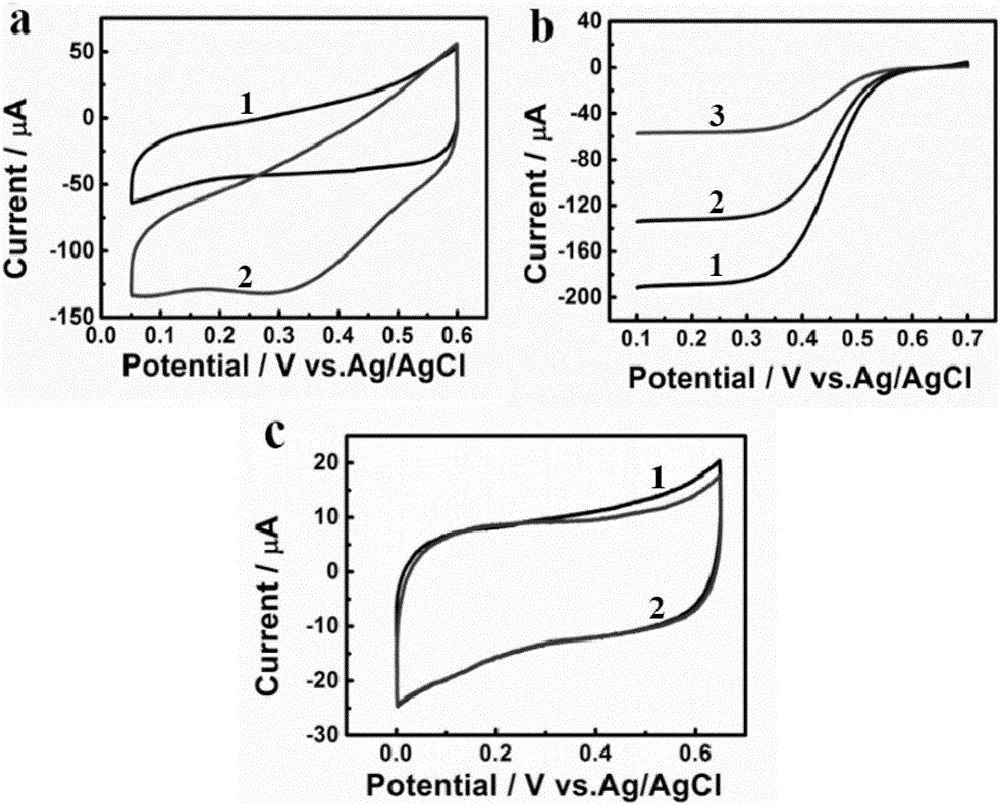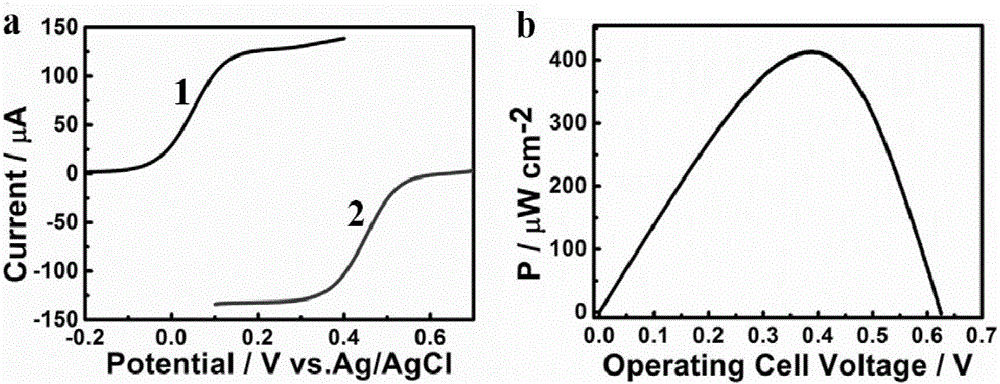Construction method and application of surface protein-embossed self-energized biological fuel cell sensor
A biofuel cell and surface protein technology, applied in the field of biosensors, can solve problems such as poor selectivity, complicated operation, and low sensitivity, and achieve the effects of large construction probability, simple operation, and low cost
- Summary
- Abstract
- Description
- Claims
- Application Information
AI Technical Summary
Problems solved by technology
Method used
Image
Examples
Embodiment 1
[0058] Step (1) Preparation of protein imprinted macroporous monolayer molecularly imprinted polymer (MIP) electrode:
[0059] First, the carbon electrode was washed three times with 0.1M NaOH and secondary water, and then the electrode was immersed in a mixed solution of γ-methacryloxypropyltrimethoxysilane (γ-MAPS) and methanol (volume Ratio 1:9) in 8h. Finally, the electrodes were rinsed with methanol and secondary water respectively to remove residual reagents. 1 mg of vinylphenylboronic acid (VPBA) was first dissolved in 100 μL of polyethylene glycol 200 (PEG200) and 94 μL of 0.2M Na at pH=9.3 2 HPO 4Mix the solution and sonicate for 5min. Then, 6 μL of 10 mg / mL horseradish peroxidase (HRP) aqueous solution, 1 mg of benzoin dimethyl ether, 300 μL of PEG200 and 100 μL of polyethylene glycol diacrylate (PEGDA) were sequentially added to the above mixed solution and stirred at room temperature for 10 min to obtain prepolymer solution. The resulting prepolymer solution (...
Embodiment 2
[0073] Step (1) Preparation of protein imprinted macroporous monolayer molecularly imprinted polymer (MIP) electrode:
[0074] In order to prepare a macroporous single-layer MIP electrode imprinted with alpha-fetoprotein (AFP), 16 μL of AFP solution (1 mg / mL) dissolved in PBS solution at pH = 7.5 was added to the above-mentioned steps instead of HRP when preparing the template solution. In the prepared template solution, the other steps are the same
[0075] Step (2) synthesis of aminophenylboronic acid (APBA) / bilirubin oxidase (BOD) / carbon nanotube (CNT) nanocomposite:
[0076] Same as embodiment 1 step (2).
[0077] Step (3) Preparation of AFP-imprinted MIP biocathode:
[0078] Same as step (2) of Example 1, except that HRP is replaced by AFP of equal concentration.
[0079] Step (4) prepares the preparation of the biological anode of thionine / graphene / glucose dehydrogenase:
[0080] Same as step (4) of embodiment 1.
[0081] Step (5) Preparation of small imprinted carb...
PUM
 Login to View More
Login to View More Abstract
Description
Claims
Application Information
 Login to View More
Login to View More - R&D
- Intellectual Property
- Life Sciences
- Materials
- Tech Scout
- Unparalleled Data Quality
- Higher Quality Content
- 60% Fewer Hallucinations
Browse by: Latest US Patents, China's latest patents, Technical Efficacy Thesaurus, Application Domain, Technology Topic, Popular Technical Reports.
© 2025 PatSnap. All rights reserved.Legal|Privacy policy|Modern Slavery Act Transparency Statement|Sitemap|About US| Contact US: help@patsnap.com



